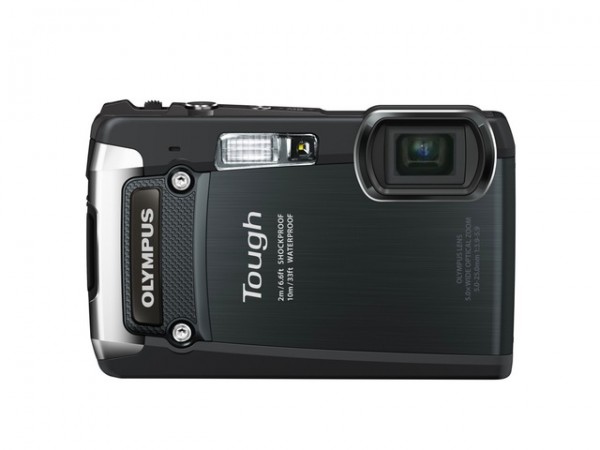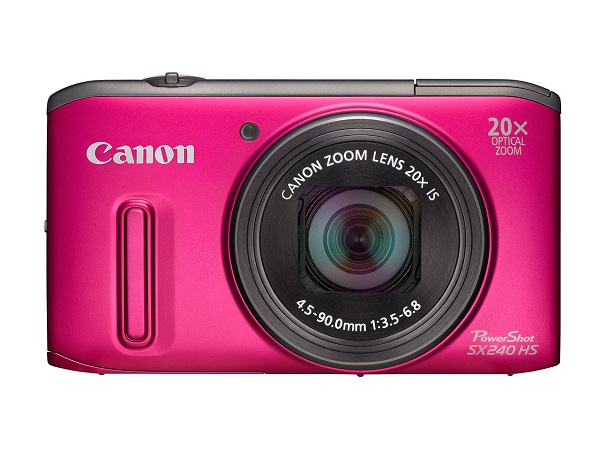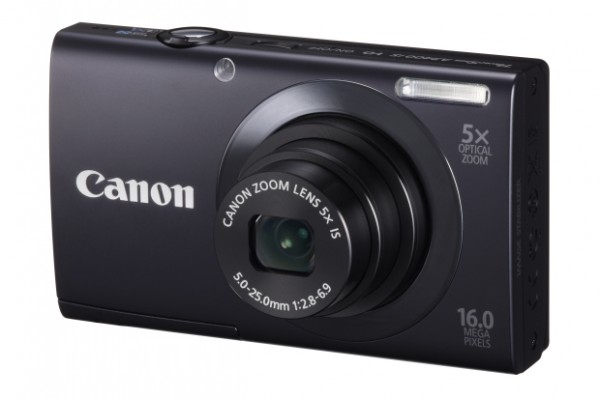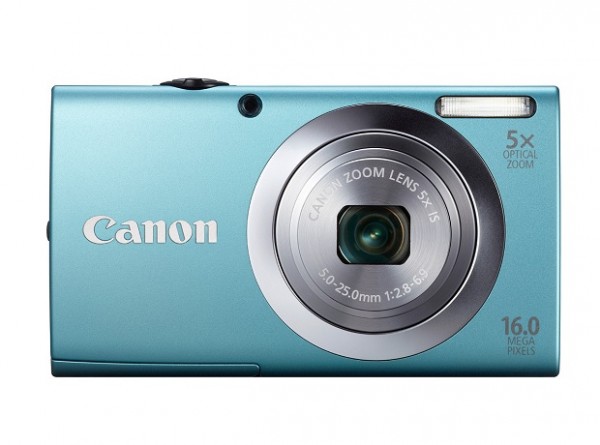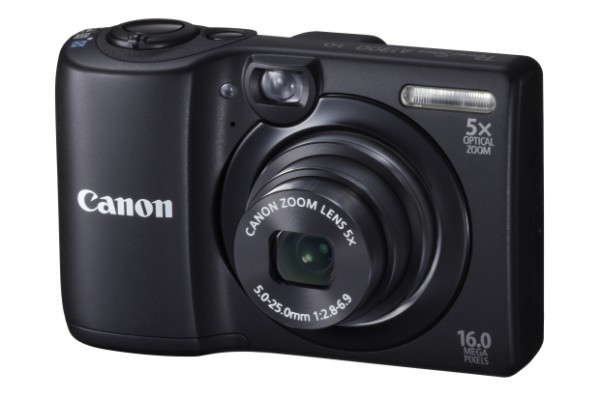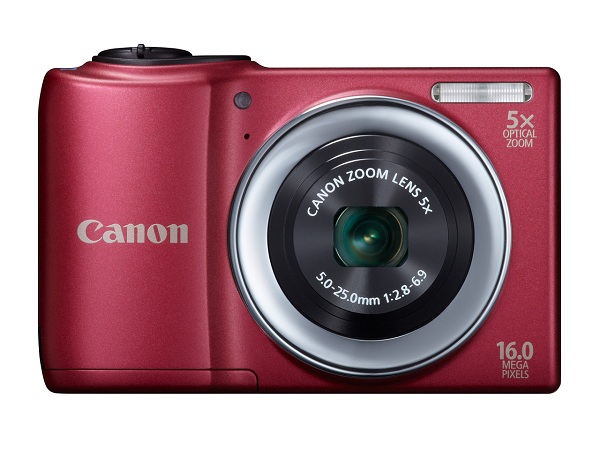February 10, 2012
Olympus Tough Cameras Continue Success with the TG-820 IHS
IHS technology embedded in the TG-820 Olympus IHS supports a number of new features that simplify the process of capturing images. High-speed autofocus and HDR Backlight Adjustment helps produce the best image quality, even in poor lighting conditions. IAuto feature allows the camera to detect 34 different scenes, such as portrait, landscape, and macros, to create the best images and video.
New tough Olympus camera can also be used to record Full HD 1080p with the quality of the technology that is supported by IHS. Features Multi-Motion Image Stabilization helps users to produce crystal clear video when recording moving objects. 28mm wide-angle lenses used in this camera store Super-Resolution Zoom capability 10x for the user to easily get closer to the object.
All these features are embedded in her solid body design. IHS Olympus TG-820 can be used in water to a depth of 10 meters, was dropped from a height of two meters, survive in temperatures as cold as -10 ° C, and carry the heavy weight of 99 kilograms. The camera is also equipped with a HyperCrystal III LCD screen measures 3 inches and has a dot resolution 1.030k. Olympus TG-820 priced at USD300 IHS with a choice of colors silver, black, and blue.
February 9, 2012
Olympus SZ-31MR IHS: Compact superzoom camera IHS With New Feature!
SZ-series compact cameras 31MR IHS still has its main feature is the ability superzoom with a range of up to 24X optical zoom lens and the lens equivalent to 25-600 mm. The use of CMOS type sensor 16 megapixel resolution is capable of producing picture quality is quite good. In addition, Olympus' latest compact camera has added a new feature called IHS (intelligent high-sensitivity/high speed technology). The technology is claimed by Olympus IHS is able to achieve images with a consistent and clear in any situation.
Some other interesting features found on compact cameras IHS MR SZ-31 is such a panoramic sweep, magic filter that can be enabled image capturing and video recording, and capture images continuously at 10 frames per second with full resolution. The SZ-31 MR series IHS has used two TruePic V processor to process the images separately.
To display the captured images or recorded, series IHS MR SZ-31 is equipped with a touchscreen LCD size 3-inch type that has a resolution of up to 920 000 pixels. For those of you who like multimedia features, this compact camera is able to record video in Full HD 1080p quality with stereo sound quality.
Olympus SZ-31 MR IHS will be marketed starting in April next year to have a price of USD 399. This compact camera will be available in two colors, namely silver and black.
February 8, 2012
Canon Expands Line of superzoom cameras with the PowerShot SX260 and SX240 HS HS
Arming Canon SX260 and SX240 HS HS CMOS sensor with 12.1 megapixel resolution. With the help of 5 DIGIC image processor, both cameras are capable of producing images with reduced noise levels by 75% compared to its predecessor model, even in poor lighting conditions, without the aid of flash or tripod.
To improve convenience for users, Canon include Smart Auto mode which can recognize 58 different scenes to help create the best image quality. White Balance technology that is used for both cameras are also able to detect a variety of light sources and improve the color balance to produce a natural image. Canon also includes a feature Face Identification (Face ID) which can detect up to 12 faces in one photo.
For those users who like Utik in doing things the camera function to produce images more artistic, do not forget the Canon offers manual control of the SX260 and SX240 HS HS. Through these controls, users can take pictures with ISO settings, shutter speed and aperture to suit their wishes. SX260 and SX240 HS HS is equipped with High-speed Burst HQ which enables shooting as fast as 10.3 shots per second.
Increase the flexibility of using the photographic work of SX260 and SX240 HS HS, Canon presents eight creative filters, such as Soft Focus which gives a romantic touch, Smooth Skin color is set to produce the perfect photo, and Miniature Effect of course, already familiar to the users of the camera pocket. Both cameras are also equipped with an LCD screen PureColor II G-sized 3-inch 460k dot resolution.
Just as compact cameras in general, SX260 and SX240 HS HS is equipped with 720p HD video recording capabilities. Various additional functions have been included by Canon to improve the practice and the creative use of video recording function in both cameras, such as Super Slow Motion Movie can slow the process of recording up to 240fps. So, what is the difference between the two cameras Canon PowerShot SX series is the latest?
The difference is quite simple. SX260 HS is equipped with a GPS function that automatically include the time and location information into any photographs, while the SX240 HS does not. Through the Map Utility software, the user can rescan the journey with the help of Google Earth. Range of functionality and design that carried the body to make SX260 and SX240 HS HS fits taken as users travel companions.
Nikon D800 and D800E 36MP full-frame DSLRs announced
EXPECTATIONS SURPASSED: THE 36.3-MEGAPIXEL NIKON D800 IS THE MULTIMEDIA HD-SLR THAT SHATTERS CONVENTIONAL RESOLUTION BARRIERS FOR MAXIMUM FIDELITY
 |
The New Nikon D800 Offers Unrivaled Resolution and Features Designed for a Variety of Demanding Professional Photographic and Multimedia Disciplines, Videographers and Filmmakers
MELVILLE, N.Y. (Feb 6, 2012) – Today, imaging leader Nikon Inc. announced the highly anticipated D800 HD-SLR, engineered to provide extreme resolution, astounding image quality and valuable video features optimized for professional still and multimedia photographers and videographers. A camera with an unmatched balance of accuracy, functionality and image quality, the Nikon D800 realizes innovations such as a high resolution 36.3-megapixel FX-format CMOS sensor, a 91,000-pixel RGB Matrix Metering System, Advanced Scene Recognition System and many other intuitive features designed to create the preeminent device for the most demanding photo and video applications.
Whether shooting high fashion, weddings or multimedia content, Nikon’s highest resolution sensor to date, a groundbreaking new 36.3-megapixel (7360 x 4912 resolution) FX-format CMOS sensor, affords flexibility and astonishing image quality to satisfy a myriad of client requests. The Nikon D800 incorporates the latest 91,000-pixel 3D Color Matrix Metering III and the Advanced Scene Recognition System, coupled with an improved 51-point AF system for images with amazing sharpness, color and clarity. With its compact, lightweight D-SLR form factor and extensive video feature set, the D800 allows photographers to transition to multimedia to create an immersive story. Professional videographers will appreciate practical features that go beyond NIKKOR lens compatibility and Full HD 1080p video, such as full manual control, uncompressed HDMI output, and incredible low-light video capability. With this innovative combination of features, the D800 celebrates resourcefulness and a dedication to the flawless execution of an epic creative vision. All of this is driven by Nikon’s latest EXPEED 3™ image processing engine, providing the necessary processing power to fuel amazing images with faithful color, a wide dynamic range and extreme resolution.
“Whatever the project, visionaries need a tool that is going to help them stay on-time and on-task. The Nikon D800 re-imagines what is possible from this level of D-SLR, to address the needs of an emerging and ever changing market; this is the camera that is going to bridge the gap for the most demanding imaging professionals, and provide never before seen levels of SLR image and video quality,” said Bo Kajiwara, director of marketing, Nikon Inc. “The D800 is the right tool for today’s creative image makers, affording photographers, filmmakers and videographers a versatile option for capturing the ultimate in still image quality or full HD content, with maximum control.”
Extreme Image Quality
The new Nikon developed 36.3-megapixel FX-format (35.9 x 24mm) CMOS sensor realizes Nikon’s highest resolution yet, and is ideal for demanding applications such as weddings, studio portraiture and landscape, where there is no compromise to exceptional high fidelity and dynamic range. Nikon’s first priority is amazing image quality above all else, and resolution of this magnitude affords photographers the ability to portray even the smallest details, such as a strand of hair, with stunning sharpness or crop liberally with confidence. Photographers also shoot with the assurance of NIKKOR lens compatibility, because only a manufacturer with decades of optical excellence can provide the glass to resolve this kind of extreme resolution.
For shooting with minimal noise in a variety of lighting conditions, the D800 features a wide native ISO range of 100-6400, expandable to 50 (Lo-1)-25,600 (Hi-2). Nikon engineers have created innovative ways to manipulate light transmission to the sensor’s photodiodes, giving users the ability to shoot with confidence in challenging lighting conditions. Internal sensor design, an enhanced optical low pass filter (OLPF) and 14 bit A/D conversion with a high signal to noise ratio all contribute to a sensor capable of excellent low light ability despite the extreme resolution. Every aspect of this new FX-format sensor is engineered to deliver amazing low noise images through the ISO range and help create astounding tonal gradation and true colors, whether shooting JPEG or RAW. Images are further routed through a 16-bit image processing pipeline, for maximum performance. To further enhance versatility, users are also able to shoot in additional modes and aspect ratios such as 5:4 to easily frame for printed portraits or a 1.2X crop for a slight telephoto edge. For even more versatility, photographers can also take advantage of Nikon DX-format lenses for more lens options and enhanced focal range (1.5X), while still retaining sharpness and details at a high 15.4-megapixel (4800x3200) resolution.
Contributing to the camera’s rapid performance and amazing image quality is Nikon’s new EXPEED 3 image processing engine that helps professionals create images and HD video with amazing resolution, color and dynamic range. From image processing to transfer, the new engine is capable of processing massive amounts of data, exacting optimal color, rich tonality and minimized noise throughout the frame. Despite the immense data, the new EXPEED 3 also contributes to energy efficiency, affording the ability to shoot longer.
The D800 also features the Advanced Scene Recognition System with the 91,000-pixel 3D Color Matrix Meter III to provide unrivaled metering in even the most challenging of lighting conditions. At the system’s core is a newly designed RGB sensor that meticulously analyzes each scene, recognizes factors such as color and brightness with unprecedented precision and then compares all the data using Nikon’s exclusive 30,000 image database. Additionally, this new sensor now has the ability to detect human faces with startling accuracy, even when shooting through the optical viewfinder. This unique feature is coupled with detailed scene analysis for more accurate autofocus (AF), Auto exposure (AE), i-TTL flash control and even enhanced subject tracking. The Color Matrix Meter also emphasizes priority on exposure of the detected faces, allowing for correct exposure even when the subject is backlit. Even in the most difficult exposures the D800 excels, such as maintaining brightness on a bride’s face while retaining the dynamic range to accentuate the intricate details of a wedding dress beside a black tuxedo.
Advanced new automatic systems make it even easier to capture amazing images. The camera features a new enhanced auto white balance system that more accurately recognizes both natural and artificial light sources, and also gives the user the option to retain the warmth of ambient lighting. Users can expand dynamic range with in-camera High Dynamic Range (HDR) image capture, and enjoy the benefits of Nikon’s Active D-lighting for balanced exposure. Another new feature is direct access to Nikon’s Picture Control presets via a dedicated button on the back of the body to tweak photo and video parameters on the fly, such as sharpness, hue and saturation.
True Cinematic Experience
The Nikon D800 has a compact and lightweight form factor that’s preferable for a production environment, yet is packed with practical and functional features. The D800 is ideal whether the user is a filmmaker on location or in the studio or a documentarian in the field who requires portability and the NIKKOR lens versatility and depth of field that only a HD-SLR can offer. Filmmakers have the choice of various resolutions and frame rates, including Full HD 1080 at 30/24p and HD 720 at 60/30p. By utilizing the B-Frame data compression method, users can record H.264/MPEG-4 AVC format video with unmatched integrity for up to 29:59 minutes per clip (normal quality). This format produces higher quality video data without increasing file size for a more efficient workflow. The optimized CMOS sensor reads image data at astoundingly fast rates, which results in less instances of rolling shutter distortion. The sensor also enables incredible low-light video capability with minimal noise, letting filmmakers capture footage where previously impossible or expensive and complex lighting would otherwise be necessary. Users are also able to have full manual control of exposure, and can also adjust the camera’s power aperture setting in live view for an accurate representation of the depth of field in a scene. Whether shooting for depth of field in FX-format mode, or looking for the extra 1.5X telephoto benefits of DX mode, the high resolution sensor of the D800 allows videographers to retain full 1080p HD resolution no matter which mode they choose to best suit the scene. Users are also able to easily compose and check critical HD focus through the 921,000-dot, 3.2-inch LCD monitor with reinforced glass, automatic monitor brightness control, and wide viewing angle.
For professional and broadcast applications that call for outboard digital recorders or external monitors, users can stream an uncompressed full HD signal directly out of the camera via the HDMI port (8 bit, 4:2:2). This output signal can be ported into a display or digital recording device or routed through a monitor and then to the recording device, eliminating the need for multiple connections. This image can also be simultaneously viewed on both the camera’s LCD and an external monitor, while eliminating on-screen camera status data for streaming purposes. The D800 also includes features concentrated on audio quality, such as a dedicated headphone jack for accurate monitoring of audio levels while recording. Audio output levels can be adjusted with 30 steps for precise audio adjustment and monitoring. The D800 offers high-fidelity audio recording control with audio levels that can be set and monitored on the camera’s LCD screen. A microphone connected via the stereo mic jack can also be adjusted with up to 20 steps of sensitivity for accurate sound reproduction. What’s more, recording can be set to be activated through the shutter button, opening a world of remote applications through the 10-pin accessory terminal.
Wield Speed and Performance with Astonishing Accuracy
Whether shooting the runway or fast moving wildlife, the enhanced 51-point AF system of the D800 delivers blazing fast AF with tack-sharp results. Nikon has enhanced the Multi-Cam 3500-FX AF sensor module and algorithms to significantly improve low light acquisition, for precise focus to an impressive -2 exposure value (EV). The focus system utilizes 15 cross-type AF sensors for enhanced accuracy, and the system also places an emphasis on the human face, working in conjunction with the Advanced Scene Recognition System to provide accurate face detection even through the optical viewfinder. The camera also utilizes nine cross-type sensors that are fully functional when using compatible NIKKOR lenses and teleconverters with an aperture value up to f/8, which is a great advantage to those who need extreme telephoto focal lengths (single cross type sensor active with TC20E III). For maximum versatility in all shooting situations, whether photographing portraits or static subjects, users are also able to select multiple AF modes, including normal, wide area, face tracking and subject tracking to best suit the scene.
The D800 delivers upon a professional’s need for maximum speed when it counts. The camera is ready to shoot in 0.12 seconds, and is ready to capture with super-fast AF and response speed. To photograph action in a burst, the camera shoots up to 4 frames per second (fps) in FX mode at full resolution, or up to a speedy 6 fps in DX mode using the optional MB-D12 Battery Pack and compatible battery. Further enhancing the speed of the camera and overall workflow, the D800 utilizes the new USB 3.0 standard for ultra fast transfer speeds.
Construction and Operability
The body of the D800 is designed to offer a compact form factor and a lightweight body for the utmost versatility. The chassis is constructed of magnesium alloy for maximum durability, and is sealed and gasketed for resistance to dirt and moisture. Users are able to easily compose through the bright optical viewfinder, which offers 100% frame coverage. For storage, the D800 has dual card slots for CF and SD cards, and offers users the ability to record backup, overflow, RAW/JPEG separation, and the additional option of shooting stills to one and video to the other. For high speed recording and transfer, data can be recorded to recent UDMA-7 and SDXC / UHS-1 cards. The shutter has been tested to withstand approximately 200,000 cycles, and the camera also employs sensor cleaning. The D800 also features a built-in flash and is compatible with Nikon’s acclaimed Creative Lighting System, including a built-in Commander mode for controlling wireless Speedlights.
D800E - Maximum Resolution Unleashed
In addition to the D800, Nikon will also be releasing a supplementary model for those professionals who demand even higher resolution and D-SLR versatility; the D800E. This model treads in medium format territory for studio work or landscape photography when there is no exception to only the highest fidelity and sharpness. This unique alternative model will effectively enhance the resolution characteristics of the 36.3-megapixel CMOS sensor by cancelling the anti-aliasing properties of the OLPF inside the camera. By doing this, light is delivered directly to the photodiodes, yielding an image resulting from the raw light gathering properties of the camera. A color moiré correction tool will also be available within Capture NX2 to enhance the D800E photographer’s workflow.
Price and Availability
The Nikon D800 will be available in late March for the suggested retail price of $2999.95.1 The D800E version will be available in mid April 2012 for a suggested retail price of $3,299.95. For more information about these models, NIKKOR lenses and other D-SLR cameras please visit www.nikonusa.com.
Nikon D800 specifications
| Price | |
|---|---|
| MSRP | US: $2999.95 UK: £2399.99 EU: €2829 |
| Body type | |
| Body type | Mid-size SLR |
| Body material | Magnesium alloy |
| Sensor | |
| Max resolution | 7360 x 4912 |
| Other resolutions | 6144 x 4912, 6144 x 4080, 5520 x 3680, 4800 x 3200, 4608 x 3680, 4608 x 3056, 3680 x 2456, 3600 x 2400, 3072 x 2456, 3072 x 2040, 2400 x 1600 |
| Image ratio w:h | 5:4, 3:2 |
| Effective pixels | 36.3 megapixels |
| Sensor photo detectors | 36.8 megapixels |
| Sensor size | Full frame (35.9 x 24 mm) |
| Sensor type | CMOS |
| Processor | Expeed 3 |
| Color space | sRGB, Adobe RGB |
| Color filter array | Primary Color Filter |
| Image | |
| ISO | 100 - 6400 in 1, 1/2 or 1/3 EV steps (50 - 25600 with boost) |
| White balance presets | 12 |
| Custom white balance | Yes (5) |
| Image stabilization | No |
| Uncompressed format | RAW |
| JPEG quality levels | Fine, Normal, Basic |
| File format |
|
| Optics & Focus | |
| Autofocus |
|
| Autofocus assist lamp | Yes |
| Digital zoom | No |
| Manual focus | Yes |
| Number of focus points | 51 |
| Lens mount | Nikon F mount |
| Focal length multiplier | 1× |
| Screen / viewfinder | |
| Articulated LCD | Fixed |
| Screen size | 3.2" |
| Screen dots | 921,000 |
| Touch screen | No |
| Screen type | TFT Color LCD with 170 degrees wide-viewing angle |
| Live view | Yes |
| Viewfinder type | Optical (pentaprism) |
| Viewfinder coverage | 100 % |
| Viewfinder magnification | 0.7× |
| Photography features | |
| Minimum shutter speed | 30 sec |
| Maximum shutter speed | 1/8000 sec |
| Exposure modes |
|
| Built-in flash | Yes (pop-up) |
| Flash range | 12 m (at ISO 100) |
| External flash | Yes (Hot-shoe, Wireless plus sync connector) |
| Flash modes | Auto, On, Off, Red-eye, Slow sync, Rear curtain, High-speed sync |
| Flash X sync speed | 1/250 sec |
| Drive modes |
|
| Continuous drive | Yes (4,6 fps) |
| Self-timer | Yes (2 to 20 sec, 1 to 9 exposures at intervals of 0.5, 1, 2 or 3 sec) |
| Metering modes |
|
| Exposure compensation | ±5 EV (at 1/3 EV, 1/2 EV, 1 EV steps) |
| AE Bracketing | (2, 3, 5, 7 frames at 1/3 EV, 1/2 EV, 2/3 EV, 1 EV steps) |
| WB Bracketing | Yes (2 to 9 frames in steps of 1, 2 or 3) |
| Videography features | |
| Format |
|
| Microphone | Mono |
| Speaker | Mono |
| Resolutions | 1920 x 1080 (30, 25, 24 fps), 1280 x 720 (60, 50, 30, 25 fps), 640 x 424 (24 fps) |
| Storage | |
| Storage types | Compact Flash (Type I), SD/SDHC/SDXC UHS-I compliant |
| Storage included | None |
| Connectivity | |
| USB | USB 3.0 (5 GBit/sec) |
| HDMI | Yes (Mini Type C) |
| Wireless | None |
| Remote control | Yes (Optional, wired or wireless ) |
| Physical | |
| Environmentally sealed | Yes (Water and dust resistant) |
| Battery | Battery Pack |
| Battery description | Lithium-Ion EN-EL3e rechargeable battery & charger |
| Weight (inc. batteries) | 900 g (1.98 lb / 31.75 oz) |
| Dimensions | 146 x 123 x 82 mm (5.75 x 4.84 x 3.23") |
| Other features | |
| Orientation sensor | Yes |
| Timelapse recording | Yes |
| GPS | Optional |
| GPS notes | GP-1 |
Additional images
 |  |
 |  |
February 7, 2012
Canon PowerShot Camera Announces 6 New Series A
Canon again spoil the budding photographers and enthusiasts point and shoot cameras by announcing six new PowerShot A series of them. The sixth camera is equipped with 16 megapixel resolution sensor, 720p HD video recording capability, and wide-angle 28mm lens. For the first time in the history of the Powershot A series, Canon's Intelligent features buried Image Stabilization (IS) into three new cameras, the A4000 IS, A3400 IS and A2400 IS. This feature will select the most effective IS mode to produce the best image quality.
Canon's Smart Auto feature also includes the whole range of new A series cameras, including the A2300, A1300, and A810. This feature will select from 32 shooting modes based on the environmental condition of the object image. For new users who want to learn more about the six cameras, Canon have included a Help button that offers an explanation of variation in capture mode.
Canon PowerShot A4000 IS
The camera is equipped with a Genuine Canon Lens and Optical Image Stabililzation that allows users to take detailed photographs of close proximity, as well as landscape photography. Lens embedded in the A4000 IS can perform up to 8x optical zoom which is the longest zoom level for a series of camera A. For the operation of camera functions and look again captured, A4000 IS is equipped with an LCD screen measuring 3 inches. The camera is presented in five colors (black, silver, blue, red, and pink) and sold for $ 200.
Canon PowerShot A3400 IS
Same with the A4000 IS, a camera is also equipped with a Genuine Canon Lens and Optical Image Stabilization, but the lens is used only to achieve a 5x optical zoom. To facilitate the operation of camera functions, A3400 IS is equipped with 3-inch LCD screen, complete with Touch Panel so that users can utilize the function Shutter Touch Focus and Touch in it. Canon PowerShot A3400 IS comes in four colors (black, silver, red, and gold) and sold at a price of USD180.
Canon PowerShot A2400 IS and A2300

Both cameras are equipped with a 5x optical zoom capability and an LCD screen measuring 2.7 inches. A2400 IS is equipped with Optical Image Stabilization will be available in black, silver, blue, or pink and are sold at a price of $ 160. A2300 will be priced at $ 150 and have a choice of four colors, namely black, silver, red, and blue.
C
Just like the two previous cameras, A1300 and A810 comes with 5x optical zoom capability and an LCD screen measuring 2.7 inches. However, both cameras derive their power from AA batteries that provide ease of replacement batteries at a time when users are on vacation. Canon presents the optical viewfinder in the camera A1300 for users of traditional cameras. A1300 will be available in a choice of black or silver and is priced at USD120, while the A810 comes in black, silver, red and priced at USD110.
February 6, 2012
New Olympus DSLR leaked Amazon.com
DSLR, called E-M5, have become a very hot rumor materials discussed in the photography community. A few hours ago, one user found the photo above on the Japanese Amazon site. As can be seen, the design of this camera is very similar to the design of the Olympus OM-4T, a DSLR is marketed in the 80s.
E-M5 back
Olympus E-M5 is touted as the first camera equipped with vibration dampening technology 5-axis. Average vibration damper is currently only able to reduce the movement of the second axis. If true this camera is equipped with 5-axis attenuation, then the E-M5 can potentially dampen vibrations even when shooting macro.
A leaked photo showing the camera the other E-M5 version of the black and silver along with various accessories. Visible in the photo are two new lenses, 75mm f/1.8 and 60mm f/2.8. Based on the size of the image, E-M5 seems to use the Micro Four-Thirds standards such as the Olympus Pen, so it may not have the primary mirror. Let's wait when the camera is launched Wednesday, February 8, 2012.
Olympus E-M5 Specifications (according to rumor):
16 megapixel sensor with 5-axis vibration damping
Today's fastest autofocus (faster than the Nikon D4)
Continuous frames up to 9 frames per second
VI TruePic image processor
ISO 200-25600
Electronic viewfinder resolution of 1.44 mega dot
3-inch touchscreen OLED display that can be played
Full HD video recording
Price (approx.) $ 1,200
Sources: 43rumors.com
REVIEW : Olympus E-PL3 & E-PM1
Digital Camera, News
Olympus E-PL3.
In addition to the E-P3 is equipped with amazing features, also launched the Olympus Pen Lite E-PL3 and Pen Mini E-PM1. E-PL3 positioned as the successor to the E-PL2, but the features and design are both very different so that the E-PL3 can be categorized as a new line. E-PM1, by contrast, is a new design.
E-PL3 got many new features compared to E-PL2, such as the LCD screen can be rotated, a new AF system, faster continuous shot, metal body, and full HD video recording. However, this camera is also missing an important feature, the built-in flash.

12.3-megapixel Live MOS sensor is a new generation, the same as the E-P3.
Image processor TruePic VI dual-core (again, the same as the E-P3).
Micro Four Thirds mount with 2x crop factor.
35 point AF system as found on the E-P3.
Compact metal body with a choice of black, silver, white and red.
Vibration damper on the sensor.
3-inch LCD can be rotated by 460 000 dot resolution.
There is no built-in flash, but included a small flash in the sales package (GN 10 at ISO 200). It remains unclear whether this flash can be used to control the wireless flash.
Full manual control, RAW image format.
Continuous shoot 5.5 frames / sec with IS died (4.1 fps with active IS).
Only six Art Filters (compared to 10 in the E-P3).
Full HD video recording (1080/60i, 30p) with stereo audio and continuous AF. AVCHD compression.
Slot SD / SDHC / SDXC card.
HDMI output.
The following marketed lens 14-42mm / 3.5 to 5.6 or 17mm/2.8 pancake.
Price and availability date announced soon.
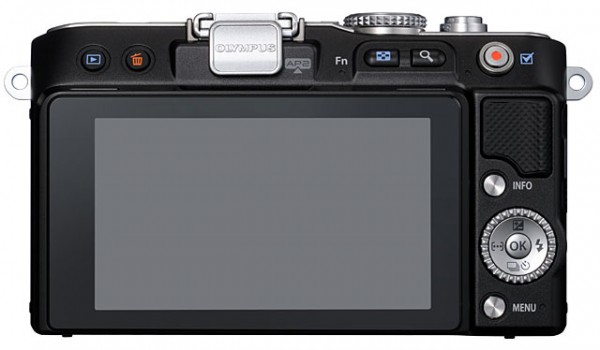
E-PM1 has a petite body longer than the E-PL3, making it more portable. However, the number of buttons on the E-PM1 less, so you need to go more often to change the camera settings menu. In addition, E-PM1 has many features similar to the E-PL3.

E-PM1 specifications that differ from E-PL3:
A smaller body with fewer buttons (and no play button). Available in purple, pink, brown, white, silver, and black.
3-inch LCD screen that can not be played, 460 000 dot resolution.
Only available option kit lens 14-42mm / 3.5 to 5.6 in the sales package.
Price and availability date announced soon.
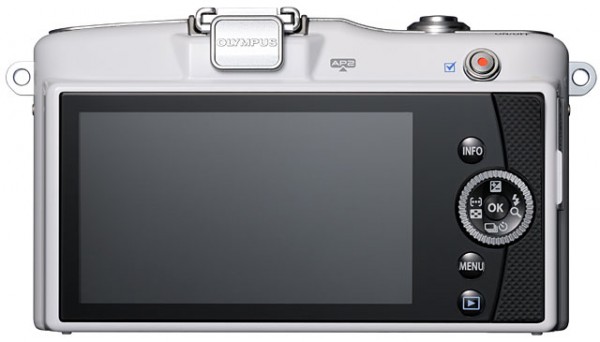
REVIEW:Canon Best Touch Screen Camera Canon Ixus 310HS
Canon Ixus 310HS specifications at a glance
High sensitivity CMOS sensor 12.1 megapixel
Xf/2.0-5.8 4.4 zoom lens, equivalent to 24 to 105.6 mm
Vibration damper on the lens, with dynamic IS for movie recording
3.2-inch touch screen 461 000 dot resolution
Available Smart AUTO and Manual Exposure modes
Video recording Full HD 1920 x 1080 (24 fps) with stereo audio
The optical zoom can be used when recording video
HDMI output
Product Tour

No different from other Canon cameras, you get a USB cable and AV cable in the sales package. In addition, charger, strap, CD applications, and guide books. The content of this sales package can be practically unchanged since we first tried digital Ixus, about 8 years ago.
The range of only 4.4x zoom lens Slightly shorter than the Ixus in general. In the vicinity of the lens there is a flash, AF assist lamp, and two stereo mic. You need to be careful when recording video, make sure the fingers do not cover one of these mics.
The touch screen is 3.2 inches wide at the incredible this petite camera. All but one button on the back of the camera have been excluded. All features are accessible via the touch screen.
At the top, buttons and levers left only a little. This camera is slightly Thicker than the other Ixus.
Ixus 310 HS has an HDMI port to connect the camera to an HD television. It is also available port combo USB / AV out to connect the camera with a computer or a non-HD television.
We tested the performance of the sensor and the lens at different levels of illumination. It is done in the lab by using the lowest sensitivity to the highest. The images are displayed below.
We have high expectations on the HS system which means the High Sensitivity and Ixus 310HS does not disappoint. At ISO100 to 400 the results are very, very sharp with high detail and clear lines. The sharpness of the image is slightly decreased at ISO800 and ISO1600, but still took out the “good”. ISO3200-Ixus 310 HS was not disappointing. Images at high ISO is a bright, relatively sharp, with little noise is annoying.
Therefore IXUS 310HS has a recording capability Full HD (1920 × 1080 pixels), then we also tested the video recording capabilities. We record video in the lab with various levels of lighting. The results of the video and then played using Windows Media Player. The results of the video screenshot are shown below.
Again, low-light capabilities Ixus 310HS amaze us. Until the Exposure Value 4, the lighting in the dimly lit room, this camera produces very sharp HD video with bright colors. In fact, the 310HS video on EV4, including the best of JagatReview ever tested. In EV2, 310HS can still produce an image, but the quality is declining further. Extinction point reached on the value of EV0.
Conclusion
In a digital camera, low-light capability is quite important because most digital cameras use indoors or at night. Tests showed that the Ixus 310HS JagatReview extraordinary reliably in that category, both for photos and video. We also found that the shutter lag and AF lag this camera is very short. Combined with all the other features and the price is attractive, Ixus 310HS become one of the best-value cameras on the market today.
Plus:
- The picture quality is very good
- The touch screen
- Full HD video recording
- The optical zoom can be used during video recording
- Spry with a short shutter lag
- The color brown is very elegant
Minus:
- The size and weight of the camera somewhat larger than the Ixus in general
February 5, 2012
Compact Camera Buyer's Guide part-2
If you describe yourself as an amateur novice on the previous page so serious compact camera is probably the most suitable. The camera of this type are usually still small enough so as not to burden to carry everywhere, but still have the possibility of adding a lot of accessories. In addition, given the image quality is usually the highest among other compact cameras. Important feature that is owned by the manual setting, be it manual exposure, focus, or the other. Also important is the hotshoe and THREAD filter to connect the various accessories in the future. RAW image format is also worth looking at the camera to be purchased for this file type has a higher image quality.
Best Serious Compact : Canon Powershot G12
Users who want a serious shot of sharpening skills certainly satisfied with the Canon G12. Chassis "rhinoceros", amazing sensors, high resolution large LCD, and dual control dial for ease of use are some of the advantages of this camera. G12 allows you to manually adjust all the little aspects of photography, while still providing a highly intelligent Auto mode. Hot shoe on the camera fully compatible with Canon Speedlite flash or other accessories. And you can install a wide selection of accessories lens filter adapter FA-DC58B. Not satisfied with the picture on the ground? Bring the water to the G12 to the WP-DC34 housing. Canon G12 offers so many possibilities, you are free to use it as easy or as complicated as you like.
Alternative: Nikon P7000, Panasonic Lumix LX5
Compact Ultra-zoom
Class is preceded by a Panasonic camera a few years ago. At that time, Panasonic is able to cram a 10x zoom lens in a body not much larger than normal pocket camera. Now, sub-classes occupied a lot of variants of all manufacturers. Averaged 15x zoom range in a camera that is slightly larger than bar soap. Vibration damper is certain is mandatory. These types of cameras also usually have a feature like a serious compact manual.
Best Ultra-Zoom Compact : Sony Cyber-shot HX5V
Suffix "V" in the product code indicates that the type of camera is equipped with a built-in GPS and compass, so it is unique compared to its competitors is clearly evident. Zoomnya only 10x range, considerable though not for other cameras in this class. However, HX5V superior in other aspects. This camera can record Full HD video with AVCHD compression. This means that despite the high resolution, file size could be reduced a compact camera. The camera is also equipped with sweep panorama mode.
Alternatives: Canon SX130IS , Panasonic Lumix TZ10 , Fuji FinePix F300EXR
Compact SLR-like
This is the creme-de-la-creme, best of the bunch. This is the Ferrari of his compact camera, at a price not less in height. The camera of this type can usually contain all the features that exist in other types of cameras because it is not limited to body size. Zoom range on average range in value 30x the vibration damper. Any manual shooting mode, the following hot shoe and RAW image formats are also reasonably available. In addition, this type of camera should have a large LCD that can be played.
Best Compact SLR-like 2010: Canon Powershot SX30 IS

Because each candidate in this category have the same number of features, we have to think extra hard to assess the advantages and disadvantages of each camera. But in the end the choice fell on the Canon SX30 IS. As we cover in our review, this camera has so many features. But that does not mean that competitors do not have the same feature. That be the deciding factor is:
Range SX30IS amazing focus, which is 35x, the longest in the world today.
The price is still below 4 million dollars, about 500 thousand dollars cheaper than its competitors.
Alternative: Panasonic Lumix FZ100
Best Value 2010 Compact Camera: Canon Powershot SX130 IS
$210 ? No one read? At the camera store, you can find a lens filter with the same price. But the Canon, either by what magic machine, able to market a camera with a screen 12 megapixel sensor, 12x zoom lens, Image Stabilizer, HD video recording, and 3-inch LCD screen. We do not care if the shape is very bad, Canon Powershot SX130IS is the camera with the best value at this time.
Best Overall Compact Camera: Canon PowerShot S95
Silent but deadly, it's probably the most able to describe the Canon S95. As the popular Leica cameras legendary photographer Henri Cartier-Bresson, Canon S95 does not attract attention but is able to capture moments that may be beyond the capabilities of other compact cameras. This tiny camera is also very light to carry everywhere, not intimidating subject, but still has two control dial for total control. DSLR-owners were likely to prefer a Canon Powershot S95 for day-to-day because it is more convenient to use with the picture quality is equally good.
